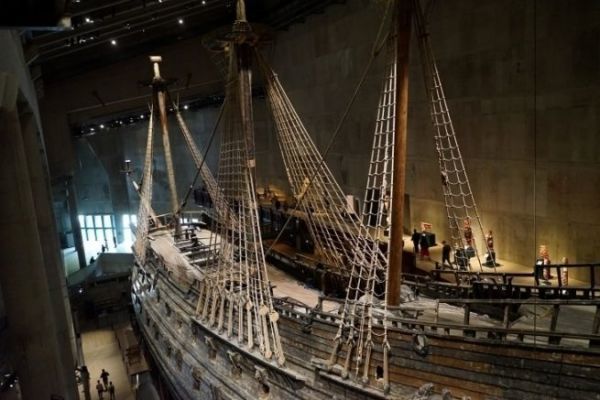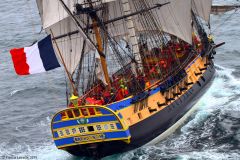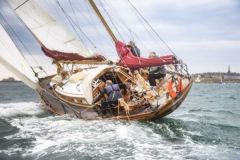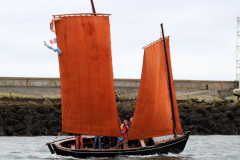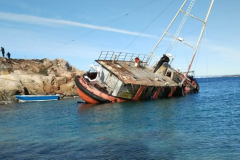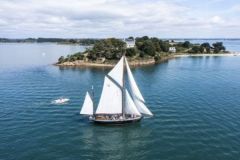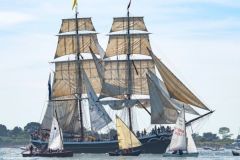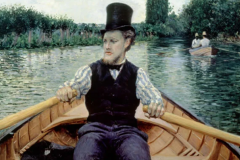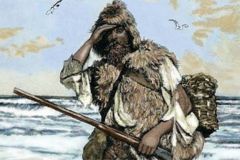Thanks to the meticulous work of historians and the most recent scientific techniques, the Vasa, a galleon refloated in 1961, is revealing a wealth of information about the past, and a whole socio-political side of 17th century Europe. But how did such an imposing vessel sink so easily? This and other questions are answered in this cinematic story by Charlotte Notteghem, Yann Ollivier and Eric Morfaux. vasa : Le galion fantôme" will be broadcast on December 2, 2023 at 8:50 pm on ARTE, with a preview on November 25 at the Musée de la Marine in Paris.
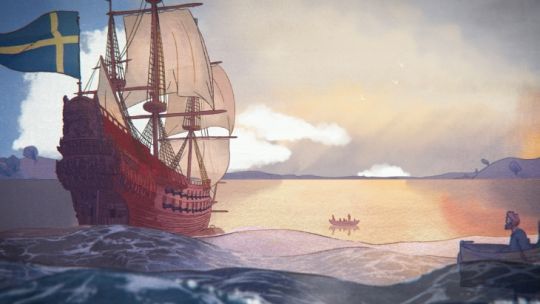
Historical background to the sinking of the galleon
On August 10, 1628, the Vasa, a warship designed to ensure Swedish supremacy in the war against Poland, sank 18 minutes after commissioning, as she sailed out of Stockholm harbor. The sea was flat, and a light breeze timidly tried to raise the sails. Suddenly, a stronger breeze appears, and the Vasa tilts sharply. Water rushed in through the portholes, swiftly engulfing the ship at a depth of nearly 32 meters, and with her some 30 of her 150-strong crew.
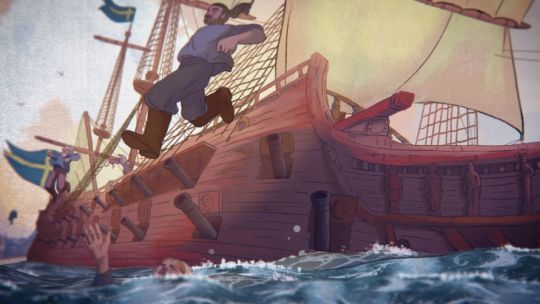
How researchers discovered the history of the Vasa
A disaster for Sweden at the time, whose ambition was to rely on this flagship to control the Baltic Sea, she was not refloated until 333 years later, after a young engineer with a passion for maritime history managed to locate the forgotten wreck. The videos of the wreck's salvage in 1961 are impressive, all the more so as it is in an exceptional state of preservation, thanks to the favorable conditions of the Baltic Sea. Water and silt are gradually drained away to lighten the structure, and the Vasa slowly rises to the surface. it took a further 17 years to impregnate the ship with glycol, enabling it to be preserved. Today, the ship is housed in a huge museum dedicated to her in Stockholm, Sweden's most visited museum.
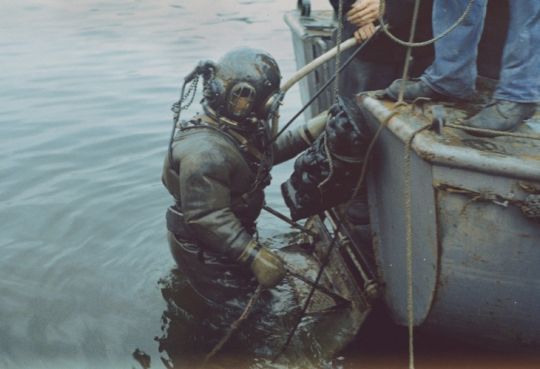
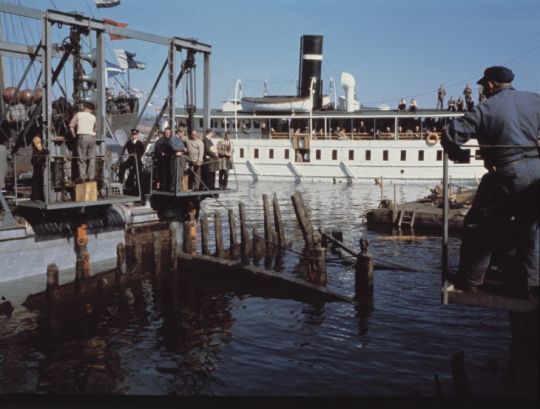
Portraits of the scientists behind the project
Fred Hocker, Director of Research and Conservation at the Vasa Museum, is a true enthusiast of this iconic ship. Of American origin, he shares his motivation and questions in the face of the challenges posed by this historic enigma.
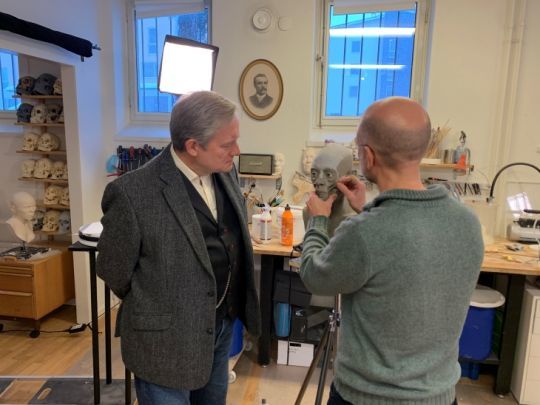
Anna Maria Forssberg, historian at the Vasa Museum, reveals the secrets of the Captain's trial archives.
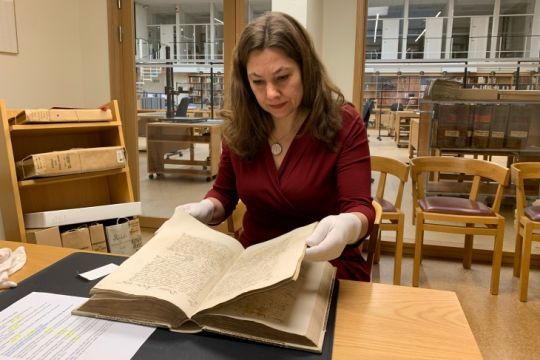
Aoife Maeliosa Daly, an Irish dendro-archaeologist based in Denmark, is collaborating with Vasa researchers to decode the mysteries of the hull, combining the physical study of wood with historical archives.
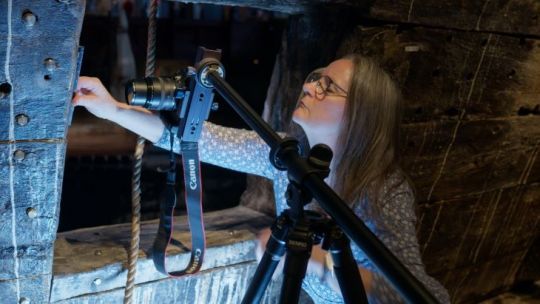
Marie Allen, forensic expert for the Swedish Forensic Science Service and Professor of Genetics at Uppsala University, uses state-of-the-art DNA analysis to reveal information about the victims of the disaster.
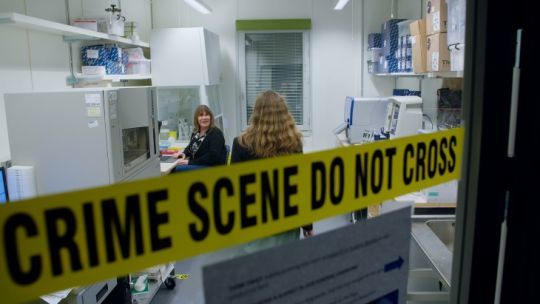
Oscar Nilsson, renowned Swedish archaeologist and sculptor, brings ancestors' faces to life through skull observations and, in some cases, DNA results, offering hyper-realistic reconstructions.
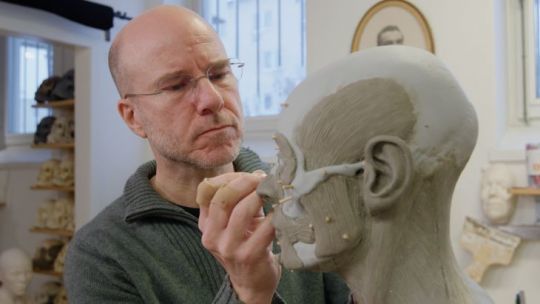
Josefin Lindegren and Anna Silwerulv work closely together to reconstruct the clothing of the Vasa's sailors, a painstaking task involving the recovery of fabric fragments from recovered bones.
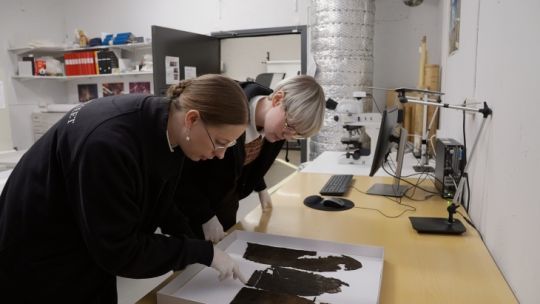
Olof Pipping, a rigging expert, is dedicated to restoring the Vasa's sails, which were found carefully folded in the holds. His research led him to meet French historian Pierrick Pourchasse in Vitré, a specialist in Breton international trade at the time.
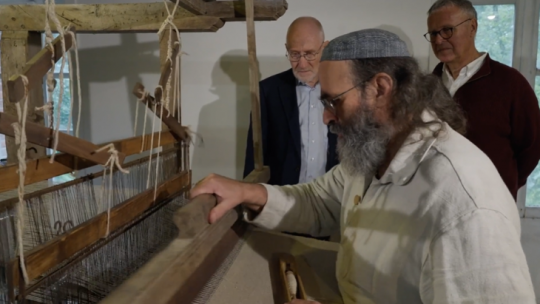
Episode 1: The Incredible Shipwreck
The first episode offers an in-depth analysis of the circumstances surrounding the tragedy, exploring its political and historical context. Using a combination of compositing animation and drawing techniques, the sinking and partial rescue of the crew are meticulously reconstructed. How could an imposing ship, designed by a seasoned architect, built in a renowned shipyard, with sails made by the finest craftsmen, sink at the first hint of trouble? Not all treasures can be found at the bottom of the sea. The trial archives, partially reconstructed in animation, highlight the multi-factorial nature of the disaster, involving aspects such as naval architecture, shipyard organization, military strategy and human error.

Over 300 men worked on the shipyard. It was a real technical challenge, as the ship, one of only two known to be built with a double deck armed with cannons, had to respond to the naval strategy of the time.
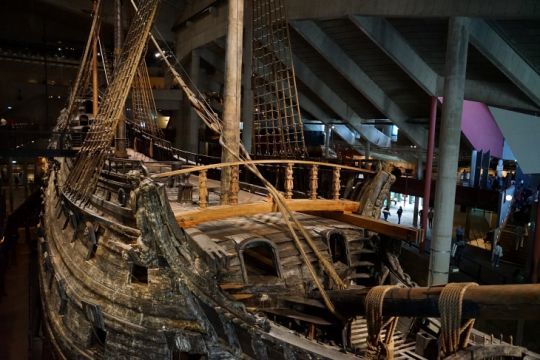
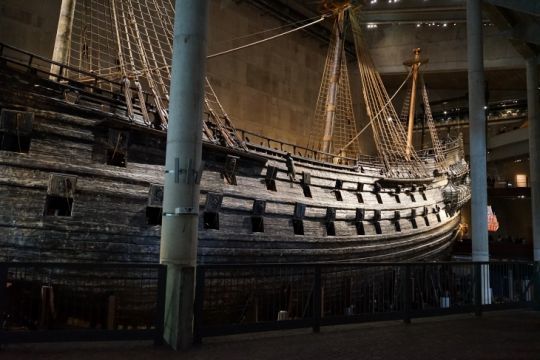
Now, the finally rescued vessel is on display in Stockholm in a museum dedicated to her. Over a period of 20 years, Fred Hocker and his team were able to reconstruct most of the ship's history. Exceptional authorization allowed the filmmaker's team to film the interior of the Vasa: her decks, holds and cabins are now revealed to the public for the first time. The decoration program was threefold. For Gustav II Adolphus, King of Sweden, it was a question of demonstrating his power, asserting his rightful place as heir to the Swedish crown, and justifying the war with Poland.
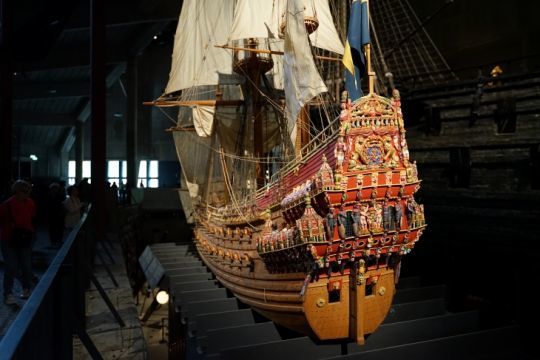
Episode 2: "Les Trésors Retrouvés" (The Lost Treasures)
The second episode explores the archaeological finds within the wreck of the Vasa. These finds offer valuable insights into the lives of the men and women on board, while also highlighting the internationalization of the trade in strategic goods in the early 17th century. Interest in the remains of the Vasa began in 1663, shortly after the shipwreck. The narrator tells us that Hans Treileben, an arms merchant, introduced the diving bell to Sweden. This technique involved immersing a steel bell with a diver wearing a leather suit, using barrels of air to renew the oxygen under the bell. The scientific team at the Vasa Museum reproduced the bell according to period plans and tested the method with Lars Gustafsson, relating his experience by slipping into the skin of a seventeenth-century diver.
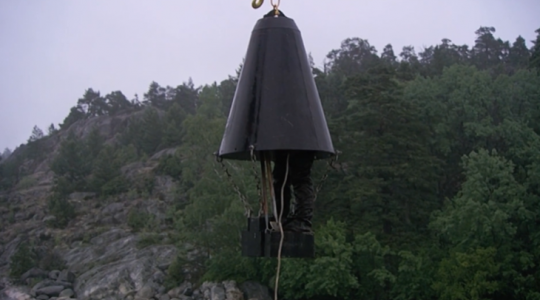
Where did the know-how and materials used to build the ship come from? A multitude of artifacts were found in the wreck. The documentary makes a number of revelations, including the fact that the Vasa's hemp sails came from Vitré, Brittany, and that its timber was bought from enemy nations... Exploring the Vasa sheds light on the geopolitics and economics of an entire era. If the history of conflicts and elites is abundantly documented, that of modest individuals often remains in the shadows. Yet the Vasa offers a wealth of clues to the crew's living conditions, revealing aspects of the daily lives of the common people from whom most of the sailors were drawn. The bones of 17 of the 30 victims of the shipwreck tell their stories, while DNA analyses carried out at Stockholm's forensic laboratory reveal details of the sailors' appearance and origins.

Forensic sculptor Oscar Nilsson used this data to create some striking facial reconstructions.
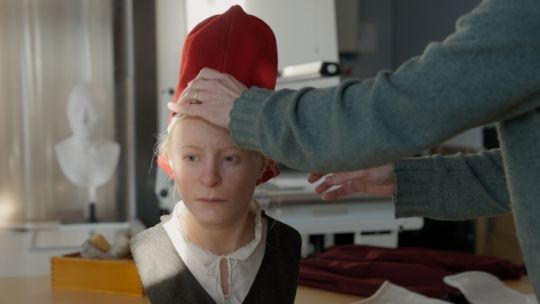
As the Vasa continues to reveal its secrets, it is now essential to concentrate efforts on preserving the ship so that it can continue to provide further subjects for study.

Although the Vasa underwent a spectacular refloating in the 1960s, paradoxically its story didn't end there. This documentary mini-series, combining present-day footage, animated reconstructions and archive footage, confronts us with a human drama that is universal. The story of the Vasa continues to unfold. Recent discoveries, the fruit of in-depth investigations, give this Swedish galleon an unprecedented European dimension, transforming it into a "time capsule" at the heart of 17th-century Northern Europe.

